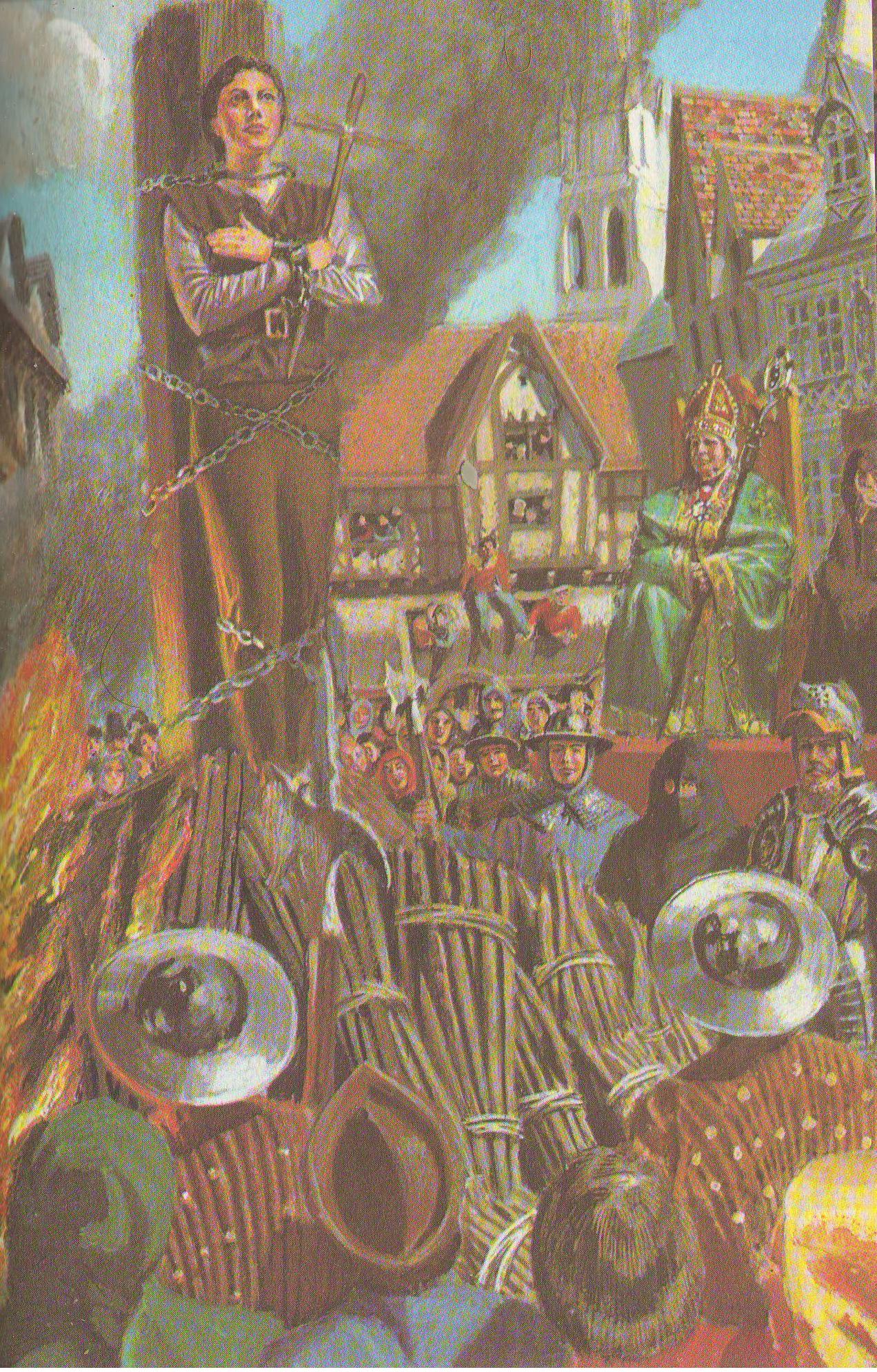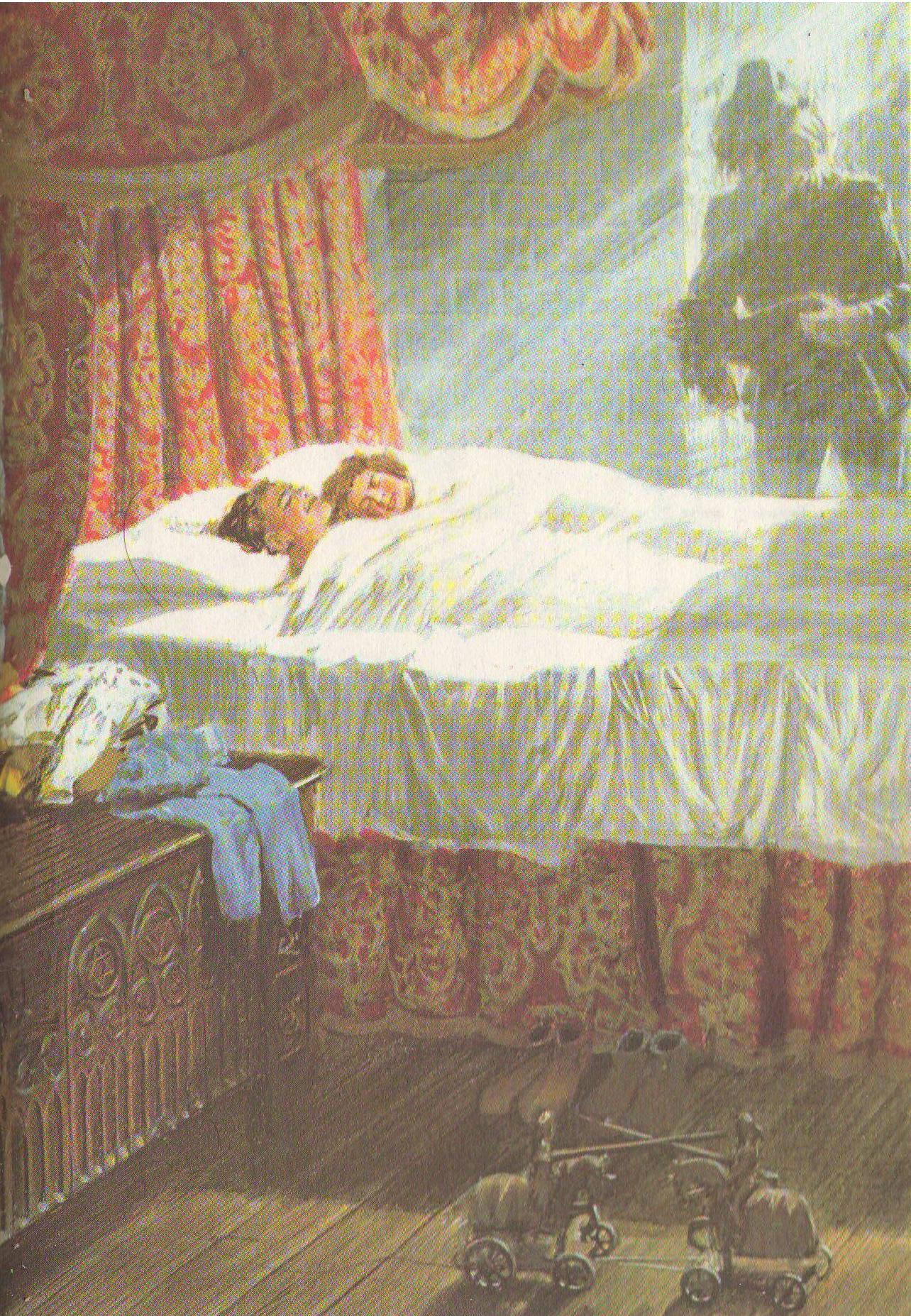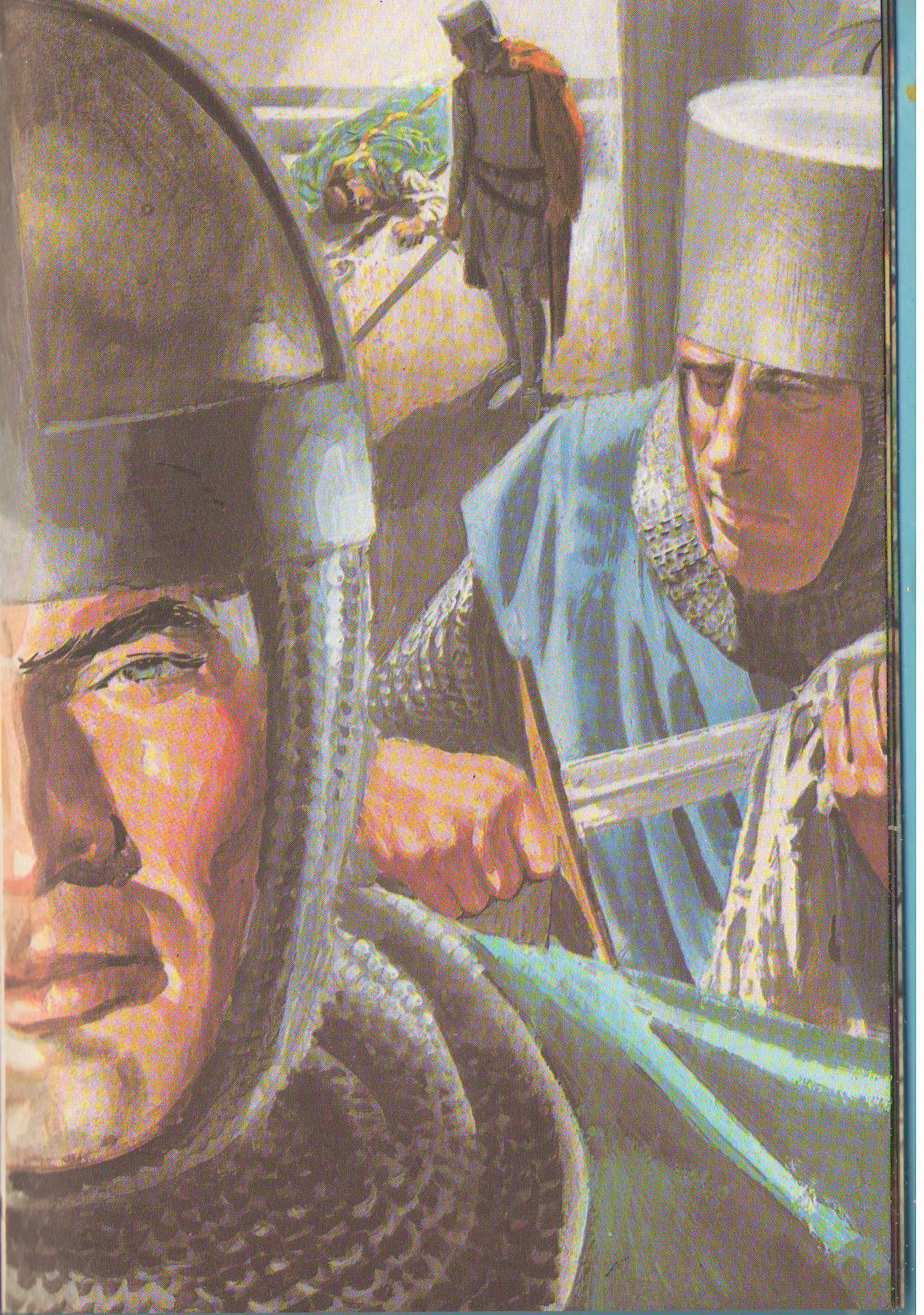Horror and Gore in Children’s Histories May 31, 2012
Author: Beach Combing | in : Actualite, Contemporary , trackback
***Dedicated to a suffering Little Miss B***
Beachombing’s eldest daughter (4) has recently begun to appreciate her nation’s past. This would be fascinating in itself. But it has become a haunting replay of Beach’s own childhood because Beach (good historian that he is) saved his own childhood reads and is now sharing them with Little Miss B. Beach has been particularly interested by the pictures that he remembers from his infancy and those he has quite forgotten. Naturally the remembered images tend to include pain or anticipated pain and all the sluiced up horror that goes with that. Who can forget ‘the page’ that you as a child tried to turn over without looking or that you only looked at with parents present? Well, here are a few from Beachcombing’s catalogue of terrors. Above is Joan ”the maid” Arc as she is turned into base elements and cooking fat and here follows the most chilling of them all: the princes in the tower about to be suffocated by ‘the shaggy shadow’.
The jousting toys are a stroke of genius.
From the little seen so far of 2012 history books for the very young there has been a period of sanitation since Beach last sat on a potty. Difficult but memorable scenes are becoming rarer. The images included here are taken from Ladybird’s Kings and Queens of England (1968). It would be interesting to see whether any of this horror and gore survives in the modern edition. Beach wonders whether any of his readers had any ghastly perhaps even inappropriate images from children’s history books of twenty or forty or sixty years ago? drbeachcombing AT yahoo DOT com
And have we gone too far in cleaning up the past? Beach, who is a great believer in the Roald Dahl school of childhood noted with a thrill that the pictures that most interested Little Miss B were precisely those that had most interested Beach himself a generation or two ago. The questions were probably the same too. Is he good? Is he bad? What will happen next? What is the black hood for? Why didn’t anyone help the little children? Daddy, what’s he wiping off his sword?
Beach’s daughter – a free spirit – was particularly bemused by a page of slavers with a long row of African tribespeople being marched towards a boat (flying the Stars and Stripes!). The very concept of slavery confused her. She also noted the man in the water in this shipwreck image below and was incredulous at his lack of armbands.
Coincidentally as Beach was writing this an email arrived from Larry (for which many thanks) linking to the image from a nineteenth-century German book on children’s bad habits. The images are beyond belief. But Beach, who had that book too as a child, always found it amusing rather than frightening. Whereas some of the simple images above lurked in the cracks between his nightmares.
***
Larry writes: ‘I agree with you that some things have become too sanitized. Where I grew up in Western Massachusetts, some PC type folks wanted to downplay the local history of Native American attacks on the English colonists, one of them being the town I grew up in Hatfield. It was all the white guys fault, of course.’ And Invisible adds (leaving history alone): Personally I was terrified as a child by the Doré engravings in an edition of The Divine Comedy, but the book probably wasn’t meant for my infant eyes. There was, of course, a whole school of “bad children who die horribly” literature in the 19th century. Theories of child development focused on the innate depravity of children and the necessity for frightening them into obedience. One of the most famous books in this punitive genre was the Peep of Day series by Mrs. Favel Lee Mortimer. Mortimer’s grandniece Rosalind Constable called the book, “one of the most outspokenly sadistic children’s books ever written”. A comparatively mild sample from Peep of Day: After a lengthy preface in which she explains that she wants to make religious topics as attractive to children as possible, she takes up the theme of the transience of life: How easy it would be to hurt your poor little body! If it were to fall into the fire, it would be burned up. If hot water were to fall upon it it would be scalded. If it were to fall into deep water, and not be taken out very soon, it would be drowned. If a great knife were run through your body, the blood would come out. If a great box were to fall on your head, your head would be crushed. If you were to fall out of the window, your neck would be broken. If you were not to eat some food for a few days, your little body would be very sick, your breadth would stop, and you would grow cold, and you would soon be dead. You see that you have a very week little body. [quotes (They) that dwell in houses of clay, which are crushed before the moth.” Job iv. 19.] Edward Gorey’s The Gashlycrumb Tinies rings the changes on these stories. Similar sentiments can be found in Gorey’s The Pious Infant and The Hapless Child. My daughter’s favorite bedtime reading for a time was a children’s book called “Pompeii: Buried Alive”. Factual and not particularly sensational, but certainly graphic. It must run in the family because I remember as a child relishing Richard Halliburton’s vivid account of Pompeiians buried and suffocated by the volcano. Saki has a delightful story called “The Story-teller” about children’s natural taste for the ferocious. Little Miss B. might enjoy the Horrible Histories by Terry Deary (Cut-throat Celts, Rotten Romans, etc.). I think there’s a similar series for the sciences about gross bodily functions, nasty smells, etc. Thanks Larry and Invisible!
25 Mar 2016: Clive writes in ‘A few examples of gore/horror in children’s history books that I remember: In the Ladybird book of (I think) Henry V there are scenes of Agincourt. One depicts English foot soldiers dragging French knights off their horses and preparing to plunge daggers into them. I think there is a separate one showing arrows from the English bows slamming into the French knights as they charged. In the Children’s Book of History (a series of at least 4 books collecting articles from a weekly magazine), there is a depiction of the charge of the British lancers at Omdurman, in which prominently shown is a trooper thrusting his lance into a kneeling Dervish. No blood but it is obvious the lance has gone deep into the Dervish’s body. I think the book series was something like the Children’s Library of Knowledge. On the front of each book was a little drawing depicting a girl and boy reading a book. Above the drawing were the words ‘In reading lies knowledge’ and below ‘In knowledge lies wisdom’. In another history book, which also seemed to be a collection of articles from a magazine, there was a depiction of slavers. The white man had a scarf wrapped around his head, pirate-style, and the black slaves were in a column with chains around their hands and feet, and neck collars linking one slave to the next. I can’t remember the name of this book but I seem to remember it was yellow with a crusader knight on the cover, and dealt with British history from 1066 or before to the end of WW2. I wondered if the image was the same as the one you described in your article but I don’t remember a stars and stripes flag and I think the caption mentioned 1610 as the first time slaves were taken to North America from Africa, so perhaps it is different. These examples above would probably be from circa 1970, give or take a year or two.






